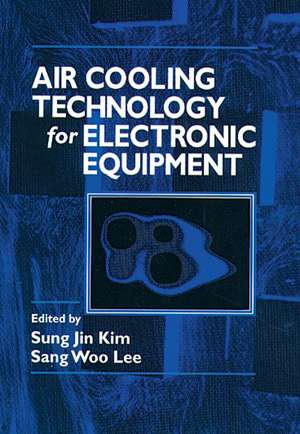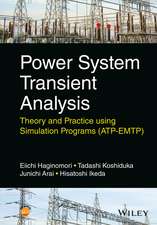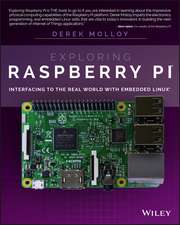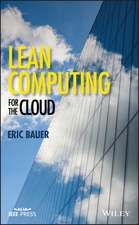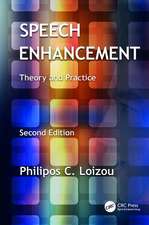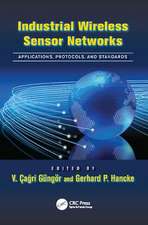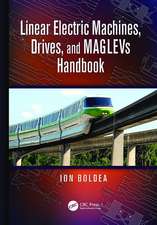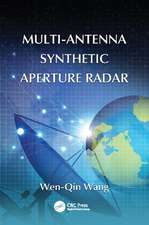Air Cooling Technology for Electronic Equipment
Editat de Sung Jin Kim, Sang Woo Leeen Limba Engleză Hardback – 26 apr 1996
Superbly organized for quick reference, the book dedicates each chapter to answering fundamental questions, such as: What is the optimal spacing between the printed circuit boards? What is a good estimate of the heat transfer coefficient and the associate pressure drop for forced convection over package arrays? How are heat transfer and fluid flow characteristics in the entrance region different from those in the fully developed region? What is the effect of substrate conduction on convection cooling?
The chapters, written by engineers and engineering educators who are experts in electronic cooling, are packed with details and present the latest developments in air cooling techniques and thermal design guidelines. They provide problem-solving analyses that are jargon-free, straightforward, and easy to understand. Air Cooling Technology for Electronic Equipment is a handy source of technical information for anyone who wants to get the most out of air cooling.
Preț: 467.78 lei
Preț vechi: 550.33 lei
-15% Nou
Puncte Express: 702
Preț estimativ în valută:
89.52€ • 97.21$ • 75.20£
89.52€ • 97.21$ • 75.20£
Carte tipărită la comandă
Livrare economică 22 aprilie-06 mai
Preluare comenzi: 021 569.72.76
Specificații
ISBN-13: 9780849394478
ISBN-10: 0849394473
Pagini: 260
Ilustrații: 257 equations; 5 Halftones, black and white; 13 Tables, black and white
Dimensiuni: 156 x 234 x 21 mm
Greutate: 0.64 kg
Ediția:1
Editura: CRC Press
Colecția CRC Press
ISBN-10: 0849394473
Pagini: 260
Ilustrații: 257 equations; 5 Halftones, black and white; 13 Tables, black and white
Dimensiuni: 156 x 234 x 21 mm
Greutate: 0.64 kg
Ediția:1
Editura: CRC Press
Colecția CRC Press
Public țintă
ProfessionalCuprins
Geometric Optimization of Cooling Techniques, A. BejanIntroductionStack of Parallel Vertical Plates Cooled by Natural ConvectionBundle of Horizontal Cylinders (Pin Fins) Cooled by Natural ConvectionStack of Parallel Plates Cooled by Laminar Forced ConvectionStack of Parallel Plates With Flush-Mounted and Protruding Heat SourcesStack of Parallel Plates Cooled by Turbulent Forced ConvectionStack of Parallel Plates Immersed in a Free StreamBundle of Cylinders Cooled by Forced ConvectionHeat Generating Plate Cooled Inside a Parallel Plate ChannelStacks of Plates Shielded by Porous ScreensPlate Fins with Variable Thickness and HeightHeat Sinks with Pin Fins and Plate FinsConclusionEntrance Design Correlations for Circuit Boards in Forced-Air Cooling, M. Faghri, M. Molki, and Y. AsakoIntroductionA New Correlation for Pressure DropA Correlation for Heat Transfer and Wake EffectA User-Friendly Program for Prediction of Array TemperatureConclusionForced Air Cooling of Low-Profile Package Arrays, R.A. WirtzIntroductionArray GeometryConvection ProcessesEstimation of Package TemperatureDetermination of h (sub K) and qPackage Heat Transfer - Uniform, In-line ArraysCoolant Pressure Drop - Uniform, In-Line ArraysNon-Uniform ArraysConclusionConjugate Heat Transfer in Forced Air Cooling of Electronic Components, A. OrtegaIntroductionBackgroundClassification of ProblemsTwo Dimensional Situation: Strip Source of Heat in Boundary Layer and Channel FlowThree Dimensional Situations: Rectangular Source of HeatClosureEnhanced Air Cooling of Electronic Equipment, S.V. GarimellaIntroductionEnhancement StrategiesEnhancement TechniquesPerformance Evaluation CriteriaClosureLimits of Air Cooling - A Methodological Approach, K. AzarIntroductionThermal Phenomena in Electronic EnclosuresThermal Coupling in Electronic
Descriere
Air Cooling Technology for Electronic Equipment answers questions frequently asked by thermal and packaging engineers. Providing problem-solving analyses that are jargon-free and easy to understand, it covers theoretical, numerical, and experimental analyses, includes detailed descriptions of 12 air cooling enhancement techniques, and discusses the limiting roles of heat transfer, fluid flow, and thermal coupling in electronic enclosures.
